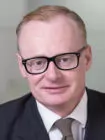Since November 2014, seven global banks have paid more than $10 billion (£6.4bn) to U.S. and European regulators to resolve allegations of collusion in the FX market between 2008 and 2013.
The Foreign Exchange ("FX") market is the largest financial market in the world, with a daily average turnover of $5.3tn, 40% of which is transacted in London.
Currency benchmark rates
FX transactions are most frequently based on the WM/Reuters "Closing Spot Rates". For the most widely traded currencies in the world, these rates are calculated, in part, by using the median of currency trades in a minute-long period starting 30 seconds before 4:00pm London time. Banks often guarantee to clients that transactions on the FX market will be done at the WM/Reuters Closing Spot Rates, as a means of valuing global currency holdings and indexes that span multiple currencies.
Manipulation of the FX market
Regulators in nine countries have launched investigations. These investigations have uncovered evidence suggesting that, between at least January 2008 and October 2013, banks have inappropriately shared market-sensitive information with one another and manipulated WM/Reuters Closing Spot Rates. FX traders, who typically communicate via instant messages, suspiciously referred to themselves as "The Cartel" among other names.
Regulatory fines in 2014
On November 12, 2014, U.S., British and Swiss regulators imposed total fines of $4.3bn (£2.6bn) on Citigroup, HSBC, JPMorgan Chase, RBS and UBS for their conduct on FX markets between January 2008 and October 2013. The regulators' investigations focused on G10 spot FX currency rates, which comprise U.S. Dollar, Euro, British Pound among other currencies.
The U.S. DoJ guilty pleas, which
we believe will assist
investors in the foreign exchange litigation, reflect the fact
that these banks have failed to live
up to their legal obligations for nearly a decade."
Michael D. Hausfeld
Chairman
Regulatory fines in 2015
On 20 May, 2015, U.S. and British regulators imposed total fines of $5.8bn (£3.7bn) on six banks. In addition to the guilty pleas, Citigroup, Barclays, JPMorgan Chase, RBS and UBS agreed to pay more than $2.7bn to the U.S. DoJ to resolve their investigations. The Federal Reserve imposed further fines of more than $1.6bn on the same five banks and $205m on Bank of America. Barclays will also pay a $1.3bn fine as part of settlements with the NY Department of Financial Services, the Commodity Futures Trading Commission and the UK Financial Conduct Authority.
Ongoing EU investigation
On January 22, 2015, EU antitrust officials announced that the European Commission was close to ending its FX probe into potentially anticompetitive conduct. An infringement or settlement decision would immediately establish the banks' liability towards victims of the manipulation in Europe.
Ongoing U.S. civil litigation
Numerous actions were filed in the United States seeking to recover for misconduct. On February 13, 2014, the Court consolidated these cases into a single action: In re Foreign Exchange Benchmark Rates Antitrust Litigation, 13-cv-7789. Hausfeld LLP has been appointed co-lead counsel in this matter. In 2015, plaintiffs reached four settlements resolving U.S.-based claims with JPMorgan, UBS, Bank of America and Citigroup for $99.5m, $135m, $175.5m and $394m respectively.
Impact on financial institutions
Various economists, firms, and financial experts have carried out preliminary studies of the potential losses benchmark users may have suffered from the manipulation of the WM/Reuters raters. The guilty pleas indicate that financial and non‐financial corporates were likely denied competitive exchange rates because of the banks' collusive practices and that the banks were able to generate illicit profits at their clients' expense.
Next steps
Hausfeld is advising a number of FX claimants in Europe of the prospects of their claim. Any damage analysis will need to address, among other things, whether the entity traded in the FX market, including trades based on the WM/Reuters Closing Spot Rates, and will involve an analysis of the individual FX transactions.
Experts cite the following techniques which FX traders allegedly used to manipulate currency rates:
- Front running: traders agreed that when they received customer orders, they would "front run" on customer information as a group, and then trade their own positions before executing their customers' market-moving trades;
- Banging the close: traders broke up large customer orders into small trades and concentrated the trades in the moments before and during the 60-second fixing window in order to spike the published rates up or down; and
- Painting the screen: traders placed phony orders with one another to create the illusion of trading activity in a given direction in order to move rates prior to the fixing window. After the WM/Reuters Closing Spots Rates were calculated, the colluding banks reversed those trades.
View the Hausfeld press release online: www.hausfeld.com/news
The content of this article is intended to provide a general guide to the subject matter. Specialist advice should be sought about your specific circumstances.


